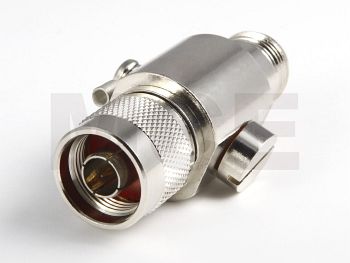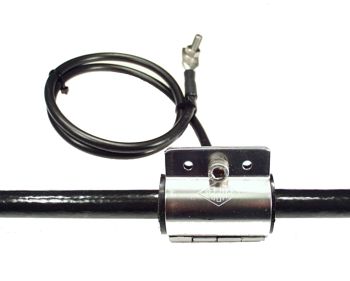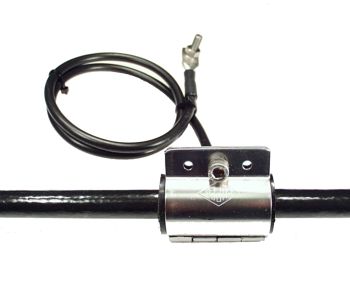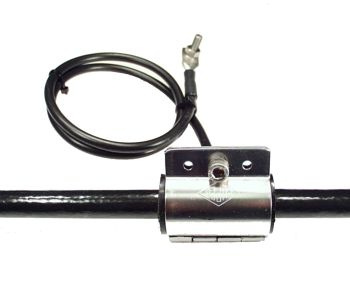Lightning Protection
Lightning Protection - Voltage Protection Connectors - Cable Groundings
High Voltage Protection with N-Connectors, Frequency Range up to 6 GHz
Read more about high voltage protection further down and in our Blog (German)
Lightning Protection Connector N Male to N Female - 6 GHz
Art-Nr: 845012Lightning Protection Connector, N Female / N Female
Art-Nr: 845016Lightning Protection Connector, N Female / N Female up to 6 GHz
Art-Nr: 845017Lightning Protection Connector N Male to N Female up to 6 GHz
Art-Nr: 845032Grounding clamp for coaxial cable diameter of 7mm to 9mm
Art-Nr: 845107Grounding clamp for cable diameter of 10mm to 12mm
Art-Nr: 845110Grounding clamp for cable diameter of 13mm to 15mm
Art-Nr: 845115Lightning protection and grounding
Proper grounding and lightning protection from outdoor and outdoor coaxial cables are so important that we would like to take up this topic here as well.
The term lightning protection in connection with lightning protection intermediate plugs is actually wrong. From a direct lightning strike also protect appropriate intermediate plugs that are looped into the coaxial cable. A lightning strikes directly an outdoor antenna or an externally routed coaxial cable, leading, depending on its intensity, to an immense damage up to the destruction. Antennas can melt, cables can also melt or catch fire.
You can protect yourself with lightning protection connectors only against overvoltage, which usually occur in thunderstorms with lightning in the immediate vicinity. To put it correctly, these lightning protection adapter plugs should be called overvoltage intermediate plugs. In the vernacular, the term lightning protection has established itself, although only an overvoltage protection is possible. The term lightning protection instead of overvoltage protection may therefore come about because lightning always has unimaginably high electrical charges. Electric charges, however, always include current and voltage.
In order not to go into depth, as it may have come to the term lightning protection, while everyone knows that this almost always meant the protection against overvoltage and is understood as such, here is an understandable example from everyday life.
If you order a beer in your pub, then the question arises whether you would like to have a beer or wheat beer. Perhaps also the question of whether it may be Hefeweizen or crystal wheat. It is beer in any case and no wine.
So you are understood by the term beer. And so you will also be understood if you speak of the lightning protection plug. Very few people still do not know that such a plug adapter can neither prevent a direct lightning strike nor remedy further destruction.
By installing such a connector you have made a major contribution to your own safety and also to protect against unwanted overvoltage of your connected devices.
In no case forget the proper earthing of the lightning protection adapter, otherwise you can omit it immediately!
Grounding clamps
As the word implies, grounding clamps are a great way to bring your coaxial cables to earth potential. The prerequisite is, of course, that these grounding clamps are also connected to dedicated earth cables. The dissipative cables of lightning conductors are ideally suited for the connection of grounding clamps. The direct connection to earthing rods is of course possible.
The handling of the grounding clamps is quite simple
Carefully remove a piece of the outer sheath of your coaxial cable (instructions are enclosed with each earthing clip), place the grounding clamp around the exposed braid and do not forget the enclosed gasket material prior to screwing on the clamp. If water or moisture penetrates into the earthing clamp, then the coaxial cable oxidises over time and the conductivity is impaired or the cable literally drips off and then becomes unusable. The more carefully you attach the grounding clamp, the less you need to worry about a cable failure. Be sure to connect the grounding clamp to a suitable earth wire and your grounding is perfect.
Grounding clamps are a useful addition to the lightning protection connectors
You can not do more for the safety of functional, external coaxial cables and antennas. And we should not pursue any further speculation about possible eventualities. By using properly installed and earthed grounding clamps in conjunction with lightning protection intermediate plugs, you have taken appropriate precautions in case of emergency.







